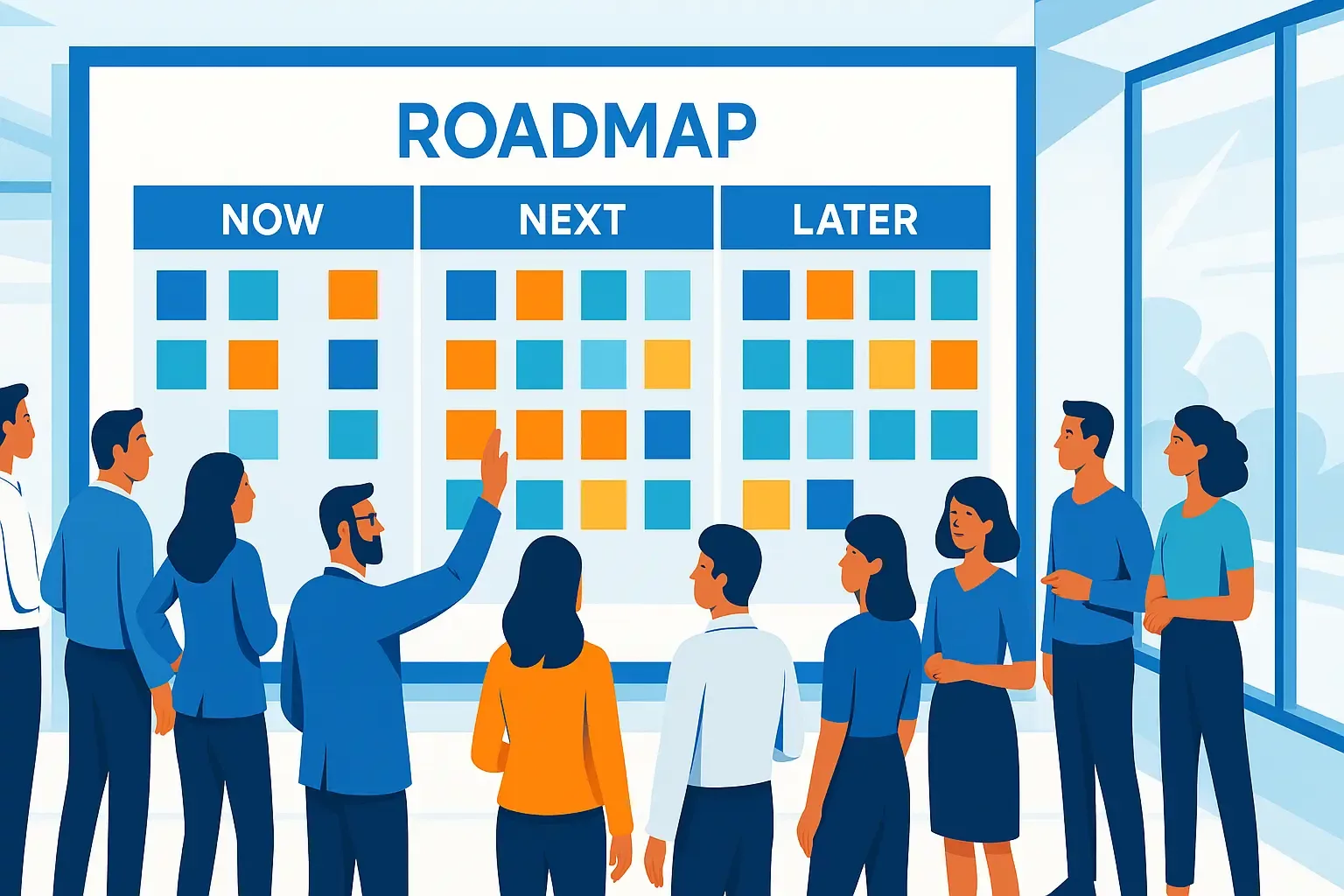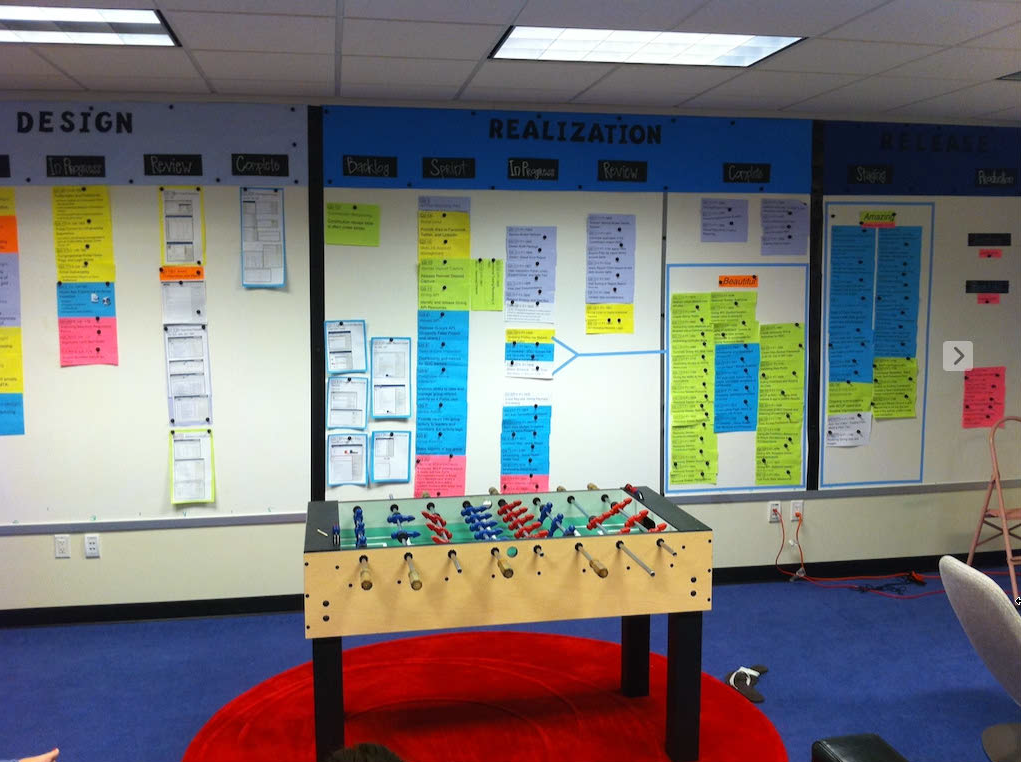
Let’s get real for a minute. One of the most common sources of confusion in agile teams—especially those trying to scale or serve complex stakeholder environments—is this:
They treat their product backlog like it’s a roadmap.
It’s an easy mistake. Both involve lists of work. Both evolve over time. And both are essential for delivering a product.
But they are not the same thing. When teams, leaders, or Product Owners blur the lines, the results can be costly—wasted effort, lost focus, and a false sense of direction (friction).
It’s time to rethink how you connect strategy to execution.
🔄 Why This Confusion Exists
It often starts with good intentions.
Stakeholders ask for a roadmap, and in the absence of one, teams share their backlog. This approach feels transparent, is readily available, and shows the work. What’s the issue?
But here’s the catch: a backlog is a tactical planning tool. It’s a prioritized list of potential changes and features, ranging from well-validated to completely hypothetical. I spend a lot of time coaching Scrum Teams, in particular. There is little to no guidance on how to create a product backlog in Scrum, and even less about what happens before an item becomes a product backlog item. At best, we now have Product Goals from the 2020 Scrum Guide.
This issue is dangerous for someone who just looks at the Scrum Guide as an implementation guide. In the hands of a guide that assists organizations in interpreting this guide and using it best for their organization, it’s powerful!
A roadmap, on the other hand, is a strategic narrative. It tells a story of direction, customer outcomes, and the business bets you’re making. It’s a compass, not a to-do list.
The confusion arises when:
- Teams lack a real roadmap (casted from product vision)
- Product Owners are overwhelmed with backlog refinement activities
- Stakeholders want guarantees, not options
The result? A tactical backlog masquerading as strategic intent.
🔍 The Key Differences
Let's get practical on the differences and nuances between the two:
1. Granularity
- Backlog: Fine-grained. Think user stories, technical tasks, spike investigations.
- Roadmap: Coarse-grained. Think initiatives, themes, or outcome-aligned objectives.
2. Confidence Level
- Backlog: Varies wildly. Some items are validated. Others are legacy “someday” ideas.
- Roadmap: Prioritized bets based on research, data, and alignment. Less clutter. More clarity.
3. Timescale
- Backlog: Lives in the near-term. Constantly refined and re-prioritized.
- Roadmap: Looks forward in broader arcs. Helps align teams over months and quarters, not just sprints.
🧭 Visual Example: Now / Next / Later vs. Backlog View
A simple shift in visualization can make a huge impact on all involved.
Now / Next / Later framing:
- Now: Work currently in progress
- Next: Things we believe we’ll tackle soon, pending validation
- Later: Hypotheses and ideas, not commitments
This model shows intent and flexibility—hallmarks of a good roadmap.
Here is an example of one of these when I was managing Product Operations at an organization:

The backlog, by contrast, is typically a flat list with limited context. You might see a top 10, but not the why behind them or their connection to broader goals (although we should be able to tie them back to goals). I often think of the Product Backlog in Scrum as being very much like an iceberg.
Small, detailed/ready-to-execute work at the top (maybe 2-3 Sprints) and large, ambiguous, and vague items towards the bottom. I don't even mind having 2-3 quarters of ideas at the bottom.
🔧 Frameworks to Help
If you want to get serious about separating roadmaps from backlogs, here are a few frameworks that help:
✅ Lean Roadmapping (via ProdPad)
Focuses on outcomes over outputs. Encourages prioritizing goals and hypotheses over fixed features.
🌳 Opportunity Solution Tree (Teresa Torres)
Maps user outcomes to opportunities, and those to potential solutions. This is a brilliant way to visualize strategic discovery work and avoid backlog bloat.
🎯 Impact Mapping (Gojko Adzic)
Starts with the goal, defines who can influence it, what they can do, and how you'll support them. It ties business outcomes to deliverables.
These tools are designed to connect strategy (roadmap) with execution (backlog)—without losing either in translation.
⚙️ Tactical Tips for Product Owners
If you're a Product Owner caught in the backlog weeds, here are a few tips to get your strategic mojo back:
1. Timebox refinement
Don’t let backlog refinement consume your week. Limit refinement to 10% of the team’s capacity (like the Scrum Guide used to recommend) and focus only on what’s most likely to be built next. If you have no idea where to start, go with 1 hr per week and expand / contract as needed.
2. Prune the backlog ruthlessly
Old tickets? Delete or archive them. If they’ve been sitting untouched for six months, they’re probably no longer relevant. Backlog size should not be a trophy; 100 items max is what I typically teach (come to a class and find out why :).
3. Keep the “big picture” visible
Maintain a lightweight roadmap in a shared space—Notion, Aha, Miro, Confluence, anywhere. Tie it back to OKRs or customer outcomes. Remind the team and stakeholders regularly where you're headed.
Our Certified Scrum Product Owner (CSPO) course goes beyond the basics of backlog writing. We teach you to lead with vision, set smart goals, and build what matters.
Or, if your team’s roadmap feels disconnected from delivery, we offer private roadmap coaching sessions tailored to your product, stakeholders, and organizational needs.